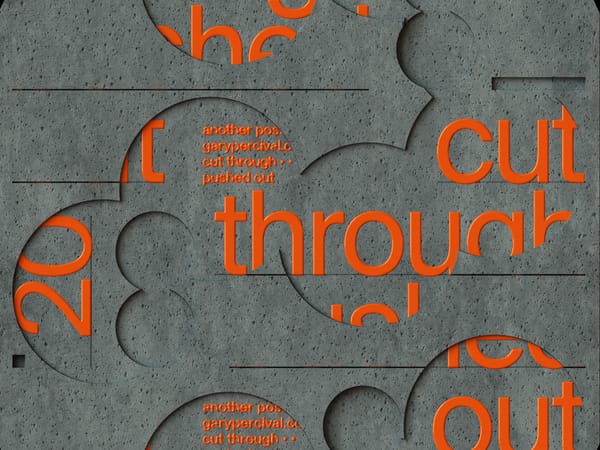Warning signs you're about to deal with a difficult customer
Working with clients can be a rewarding experience because it allows you to collaborate on projects that help businesses and individuals achieve their objectives.

Working with clients can be a rewarding experience because it allows you to collaborate on projects that help businesses and individuals achieve their objectives.
However, on occasion, you may come across a client who is difficult to work with. If you're unsure whether a client will be difficult, consider the following indicators. By being aware of these warning signs, you can take action early on and avoid any potential problems.
So, whether you're just starting out in your design career or have been working with clients for years, being prepared is always a good idea!
Ten signs that you're about to work with a difficult client
When working with clients, it's important to be able to read and understand their personality types in order to best cater to their needs. Not all clients are the same, and some can be more difficult than others.
Here are ten signs that you're about to work with a difficult client:
- They're not very clear about what they want. If a client can't articulate what they want or keeps changing their mind, it can be a challenge to deliver what they're looking for.
- They are difficult to get ahold of. You might have to email or call them multiple times just to get a response, and even then, they might not give you the information you need.
- They always want to be in control of the project and micromanage your work. They want to be in control of every aspect of the project, and they micromanage your work. This can be highly frustrating because getting creative is hard when you're constantly being second-guessed.
- They're never happy with your work. No matter how hard you try, this client is never happy with your work. They're always finding something to nitpick, and they're never satisfied with the end result. This can be extremely frustrating, and it's often a sign that the client is impossible to please.
- They treat you like an employee instead of a collaborator or partner. A client who doesn't see you as a partner in their project is more likely to be challenging to work with. They may be less likely to listen to your suggestions, value your input, or respect your creative boundaries.
- They're not willing to pay for your work. This is another frustrating type of client because they're not willing to invest in your work. They want you to do the job for free, or for a very low fee. This is often a sign that they don't value your work, and it can be very difficult to negotiate with this type of client.
- They're demanding and high-maintenance. If a client is always asking for last-minute changes or expecting you to work overtime without compensation, it can be frustrating and overwhelming.
- They're confrontational. If a client is argumentative or hostile, it can create tension and make it difficult to get anything done.
- They're uncooperative. If a client won't give feedback or suggestions or keeps putting off approvals, it can slow down the design process and cause delays.
- They're not respectful of your time or expertise. If a client doesn't appreciate the time and effort you put into your work, or tries to take advantage of you, it can be frustrating and demoralising.
If you see any of these signs in a potential client, it's important to be prepared for a difficult working relationship. These clients will require more patience and understanding, and it's important to set clear boundaries from the beginning.
By doing so, you can protect yourself from being taken advantage of and ensure that both parties are able to work together effectively.

How to deal with difficult clients most effectively
Even the best freelance graphic designers will eventually have to deal with difficult clients. These clients can be a challenge to work with for a number of reasons, from being uncooperative to downright hostile. However, there are ways to best deal with these types of clients.
The most important thing is to remain professional and calm. Avoid getting defensive or emotional, no matter how provocative the client may be. Try to listen to what the client is saying and take their concerns seriously. If you can show that you're trying to work with them, it may help to diffuse the situation.
If the client is asking for too much or making unreasonable demands, let them know what you can and can't do. Be firm but polite, and don't let them bully you into doing more than you're comfortable with.
Finally, remember that it's not always worth trying to please difficult clients. Sometimes it's better to walk away and find another project. There's no shame in admitting that someone is too much trouble and isn't worth your time and energy.
What do you do if the situation becomes too much for you?
When you're dealing with a difficult client, it's important to remember to take care of yourself first. If the situation becomes too much for you to handle, there are a few things you can do to help protect your mental health:
- Talk to someone else about the situation. Venting to a friend or family member can help relieve some of the stress you're feeling.
- Take a break from the project. If you need some time away from the project, let your client know and try to set a date for when you'll be able to continue working.
- Walk away from the project. If the situation is too much for you to handle, it's okay to walk away from the project. It's better to do that than to continue working in a situation that's causing you stress and anxiety.
Remember, your mental health is more important than any project. If you need to take a step back for your own well-being, do it.

Tips for maintaining your professionalism when working with difficult clients
No matter how difficult a client may be, it's important to always maintain your professionalism.
Here are a few tips for doing so:
- Stay calm and polite. Even if the client is being rude or unreasonable, try to remain calm and polite. This will not only make the situation more tolerable for you, but it will also show the client that you're capable of handling the situation in a professional manner.
- Don't take their behaviour personally. It can be easy to get upset when a client is being difficult, but it's important to remember that their behaviour isn't personal. They're likely just having a bad day or dealing with personal issues that have nothing to do with you.
- Avoid getting defensive. When a client is being difficult, it's natural to want to defend yourself or your work. But doing so will only aggravate the situation. Instead, try to listen to what the client is saying and address their concerns calmly and professionally.
- Keep your cool. No matter what the client does or says, it's important to keep your cool. Raising your voice, getting angry, or otherwise reacting angrily will only make the situation worse.
- Be prepared. One of the best ways to deal with difficult clients is to be prepared for their behaviour. If you know that a certain client is likely to be challenging, take some time to mentally prepare yourself before your meeting or call. This will help you stay calm and collected when dealing with them.

Setting boundaries with difficult clients
As a freelancer, it's important to set boundaries with difficult clients. This means knowing and respecting your limitations. It can be tough to say no to a client, but it's important to remember that you're the one in charge.
Here are a few tips on how to set boundaries with difficult clients:
- Establish clear expectations upfront. Make sure you and the client are on the same page about what you expect from the project. This will help prevent future miscommunications.
- Stick to your deadlines. If you've already established a project timeline, make sure you stick to it. This will aid in the prevention of future confrontations.
- Set a firm budget and stick to it. It's important to be upfront with clients about your rates and what each project will cost. This will help avoid any disagreements later on.
- Define what's included in the project and what's not. This will help avoid any confusion or conflict over the scope of the project.
- Be assertive and firm with your decisions. If the client is trying to push you into doing something you're not comfortable with, stand your ground. Remember, you're in charge!
Following these tips will help you set boundaries with difficult clients and avoid any conflicts down the road.
What do you do when your design client is always late with payments?
One of the most common difficulties with freelance graphic designers is clients who are always late with payments. In some cases, you may have to wait months to be paid for your work.
While it's important to be professional and understand that things sometimes happen outside of our control, there are a few things you can do to help protect yourself in this situation:
- Make sure you have a written contract in place specifying when payments are due and what steps will be taken if they are late.
- Stay on top of when payments are due and send email or text message reminders as necessary.
- Keep track of your invoices and follow up regularly with clients who are late in paying.
- Consider offering discounts for early payments or charging interest on late payments.
- If payments continue to be late, consider withholding further work or cancelling the project altogether.
While working with difficult clients can be frustrating, remember that you always have the power to walk away from a situation that isn't working for you. Freelance graphic designers are in high demand, so don't be afraid to put your foot down when necessary.
What do you do when your client wants unlimited revisions?
Another common difficulty is when clients want unlimited revisions. While it's important to be flexible and accommodating, you also need to protect yourself from clients who take advantage of your time and energy.
When a client asks for unlimited revisions, it is often because they do not fully understand the revision process. Take the time to explain how revisions work and what each round of revisions entails. This will help to clear up any misunderstandings.
- Again, a written contract can be helpful in defining the scope of revisions and how many are included in the project fee.
- Be clear about your revision policy before starting work, so there are no surprises later on.
- Be firm in sticking to your revision policy, even if the client is unhappy. It is critical to safeguard your time and energy.
- Offer alternatives, such as additional rounds of revisions for an additional fee, if the client is still not happy with the results.

How to terminate a project or relationship with a difficult client
Working with difficult clients can be incredibly difficult and frustrating. If you are consistently unable to communicate or collaborate with a client, it may be time to end the project or relationship.
Here are some suggestions for doing so in a respectful manner:
- Be direct and honest. Inform the client that you've been having trouble working with them and that you believe it would be best to end the project or relationship.
- Remain calm and courteous. Even if the client is difficult, you should maintain a professional demeanour.
- Avoid placing blame or making accusations. Do not attempt to blame the client for the problems you've been experiencing; doing so will only make matters worse.
- Appreciate the client's time and contributions. It is always polite to thank a client for their time and contributions, regardless of the outcome. This will aid in maintaining a positive relationship after the completion of the project.
- Prepare yourself for a negative response. When attempting to end a project or relationship with a client, there is always a chance that they will react negatively. They may become angry or upset and attempt to persuade you to remain. Be ready for this possibility, and maintain your resolve.
Difficult clients can be a challenge, but they can also teach us a lot about ourselves and how to better deal with challenging situations.
By being prepared for the signs that you're working with a difficult client, you'll be able to take the necessary steps to diffuse the situation and maintain professionalism.
What have been your experiences dealing with difficult clients? Do you have any tips to share? Let me know in the comments below.



